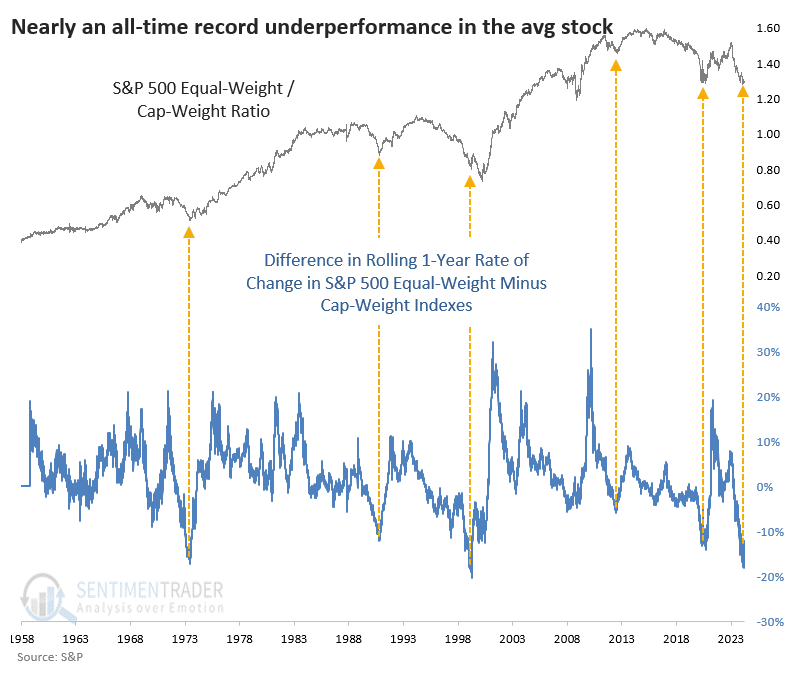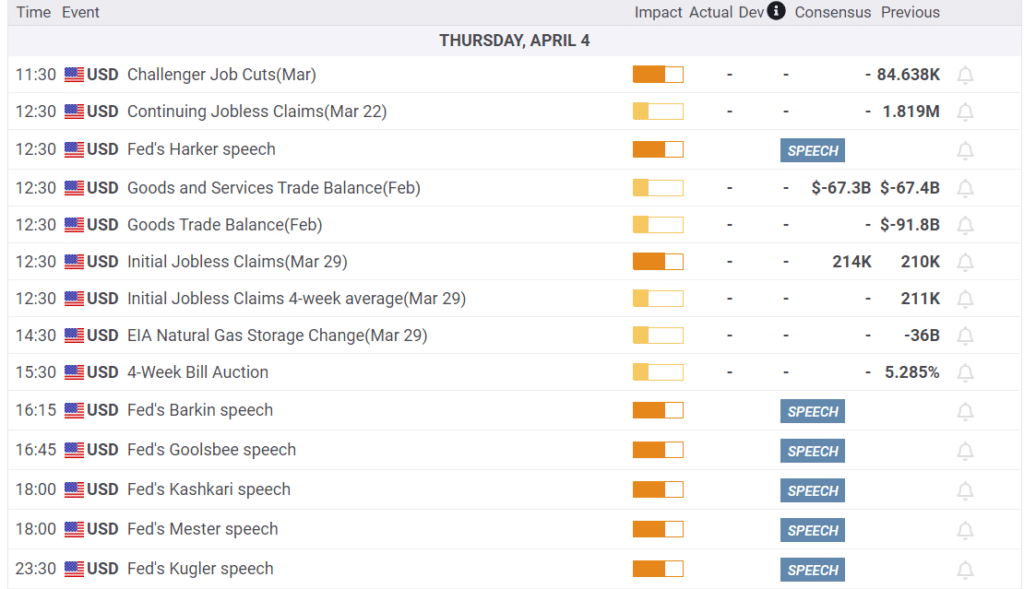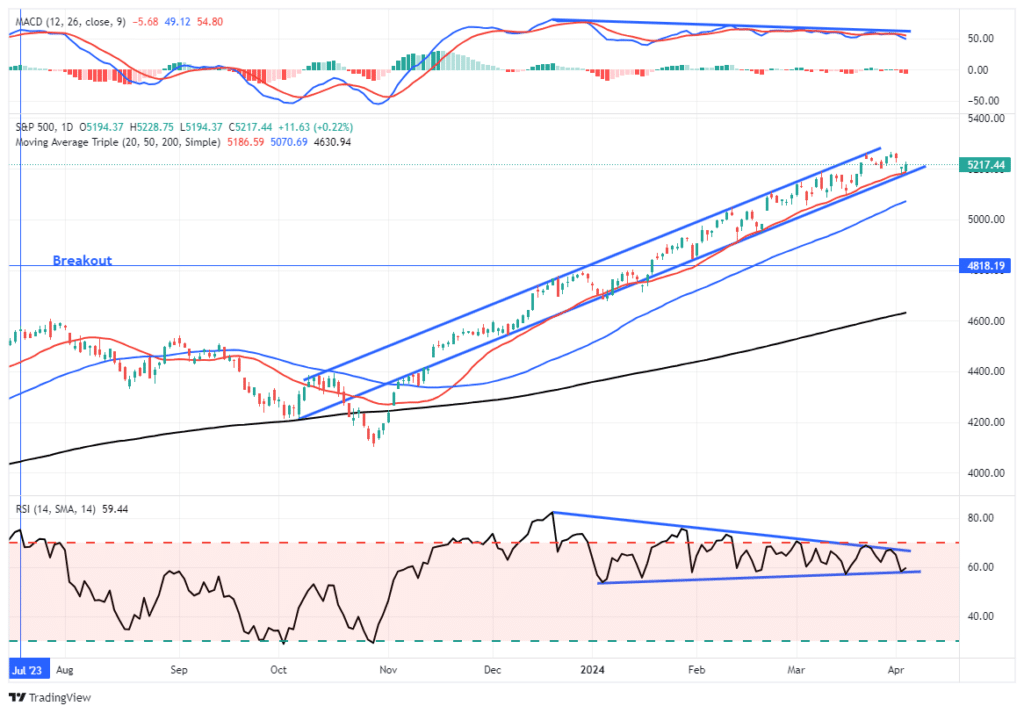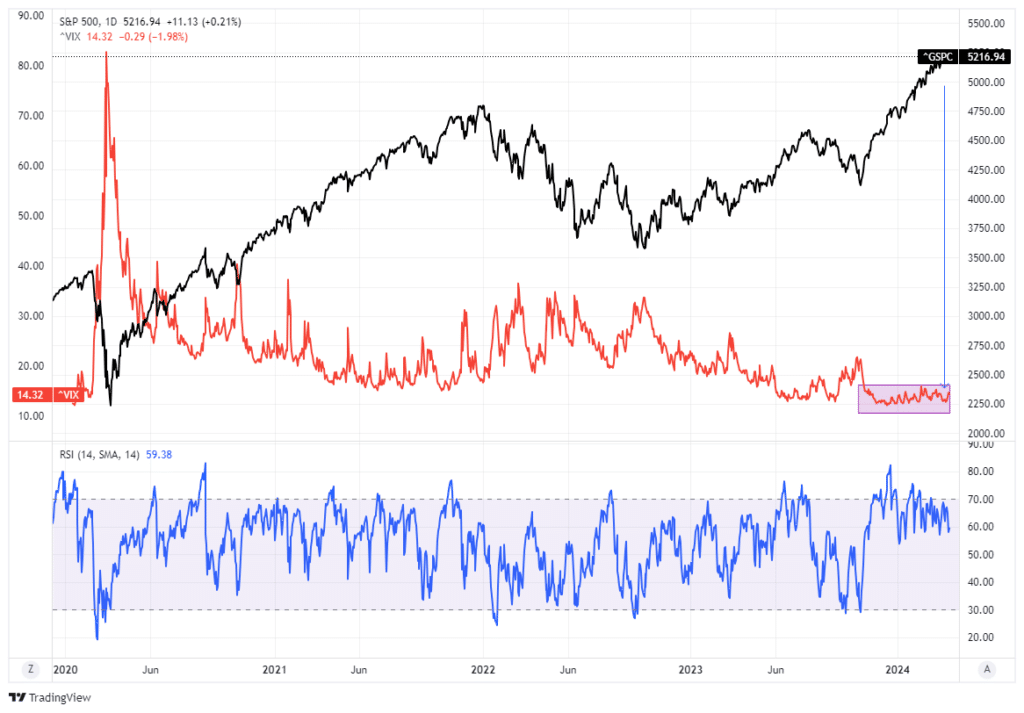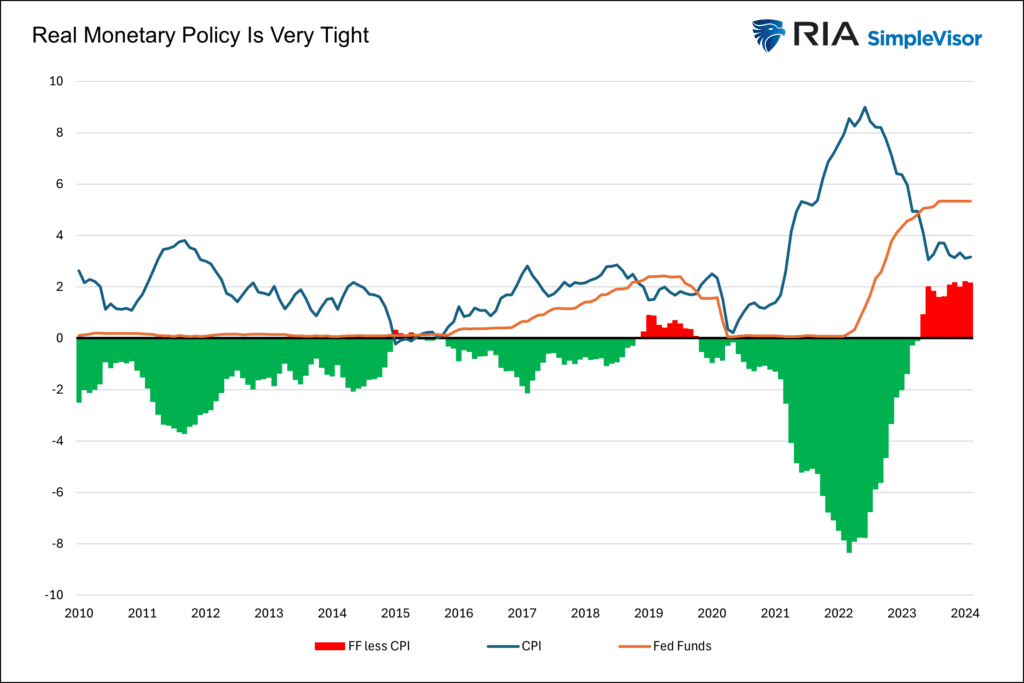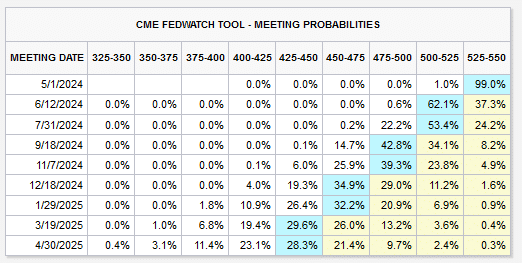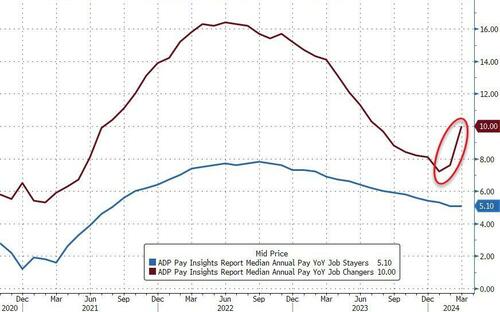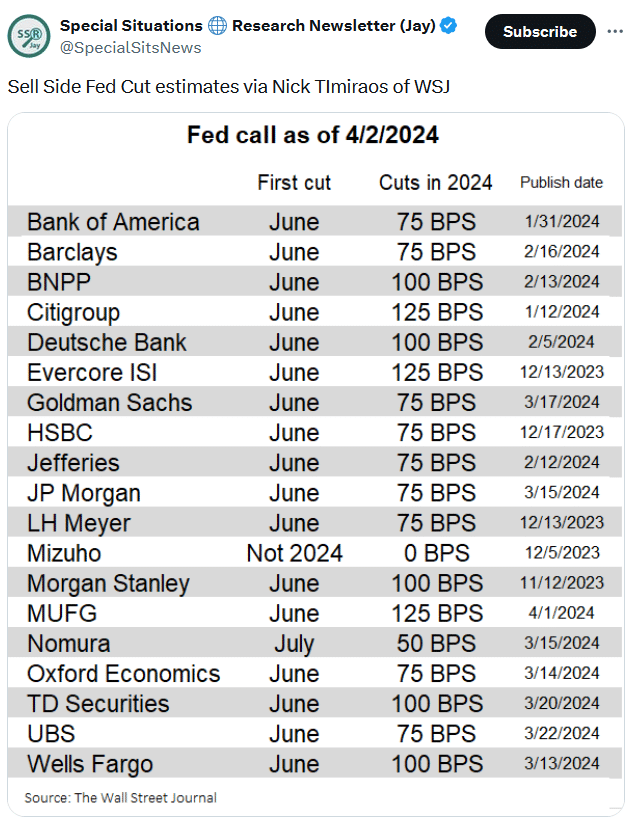Markets often experience periods, like today, where specific sectors or factors lead the market. Identifying such trends is essential to attain market-like returns. Equally important is accurately forecasting when a market rotation is at hand. To that end, we share the work from Sentimentrader.
Sentimentrader presented the graph below charting the one-year performance of the price ratio of the equal-weighted S&P (RSP) and the market cap-weighted S&P. Over the last year, the equal-weighted index has been underperforming the S&P 500 to a degree not seen since 1998. Then, internet and technology stocks were powering markets higher while most other stocks lagged. Sentimentrader considers a market rotation favoring RSP over larger cap stocks may be occurring now.
In their article, Sentimentrader provides performance data on similar instances. When the ratio (RSP/SPY) hit a ten-year low and then rebounded 5%, three-month and one-year forward returns favored RSP over SPY in four out of the five instances since 1973. The four positive performances of such market rotations averaged a one-year gain of 5.23%. In 1999, the market rotation signal was false, resulting in a one-year loss of 8.30%. The returns we quote are for the RSP:SPY price ratio, not the performance of holding either of them.
What To Watch
Earnings
Economy
Market Trading Update
As discussed yesterday, the “Bernie Madoff” bullish trend remains intact as computer algos bought the dip to the 20-DMA. So far, the market continues its bullish advance despite a stronger jobs report, which will likely keep the Fed on hold for longer.
Despite the selloff early in the week, volatility remains compressed as bullish exuberance remains unquenched.
While the message remains boring, there is little to be concerned with momentarily. Continue to maintain equity exposures in portfolios until there is a confirmed break of the 20-DMA. At such time, we will discuss becoming more defensive in positioning and allocations.
However, that is not today…at least not yet.
Three Rate Cuts This Year Yet “No Urgency” To Cut Rates
In what appears to be coordinated messages, several Fed members have said over the last couple of days that the Fed remains ready to cut rates three times this year. The messages come against a backdrop of easier financial conditions, sticky inflation, and robust economic data. Given where inflation was and the strong desire to get it to 2%, one would think they would back off their rate-cut estimates. Yet most members, including Jerome Powell, continue forecasting three cuts but stress there is no urgency to do so. If correct, they are likely to reduce rates at three of the final four meetings of the year, spanning from July to December.
“At this point, the economy and policy are in a good place.” “Inflation is coming down, but it’s slow, it’s bumpy and slow. The labor market is still going strong, and growth is going strong. So there’s really no urgency to adjust the rate.” -Mary Daly San Francisco Fed.
Cleveland Fed President Loretta Mester, one of the more hawkish Fed members, also acknowledges the economy’s strength but says, “Three rate cuts are still reasonable.“
The Fed appears to be walking a tightrope. On the one hand, it is concerned that hiking too soon will prevent inflation from falling to its target. On the other hand, it cautions that keeping monetary policy restrictive will weaken the economy and harm the labor market. As such, they are “data dependent.”
While it may seem odd that the Fed is talking about cutting rates despite inflation running above its target, it’s worth keeping in mind that the Fed Funds rate is the highest it’s been compared to inflation in fifteen years. Such tight policy will, in time, dampen economic growth and weaken the labor markets.
As the table below shows, the Fed Funds futures market implies the Fed will cut rates three times this year.
ADP Jobs Report Points To A Strong Labor Market
ADP reported that 184k jobs were added to the economy last month. Such is the biggest gain in nine months. Keep in mind that the ADP data has shown much weaker job growth than the BLS data, and the correlation between the two has recently been weaker than it has historically been. Of importance to the Fed, the median change in annual pay for people remaining at their jobs was 5.1%, but for people changing jobs, it was 10.1%. While the quits rate in the JOLTs report has normalized, the ADP report may signal that wage pressures are heating up. Obviously, one report does not make a trend, but wage growth bears watching in Friday’s BLS report. Per the ADP report:
“March was surprising not just for the pay gains, but the sectors that recorded them. The three biggest increases for job-changers were in construction, financial services, and manufacturing,” said Nela Richardson, chief economist, ADP. “Inflation has been cooling, but our data shows pay is heating up in both goods and services.”
Tweet of the Day
“Want to have better long-term success in managing your portfolio? Here are our 15-trading rules for managing market risks.”


